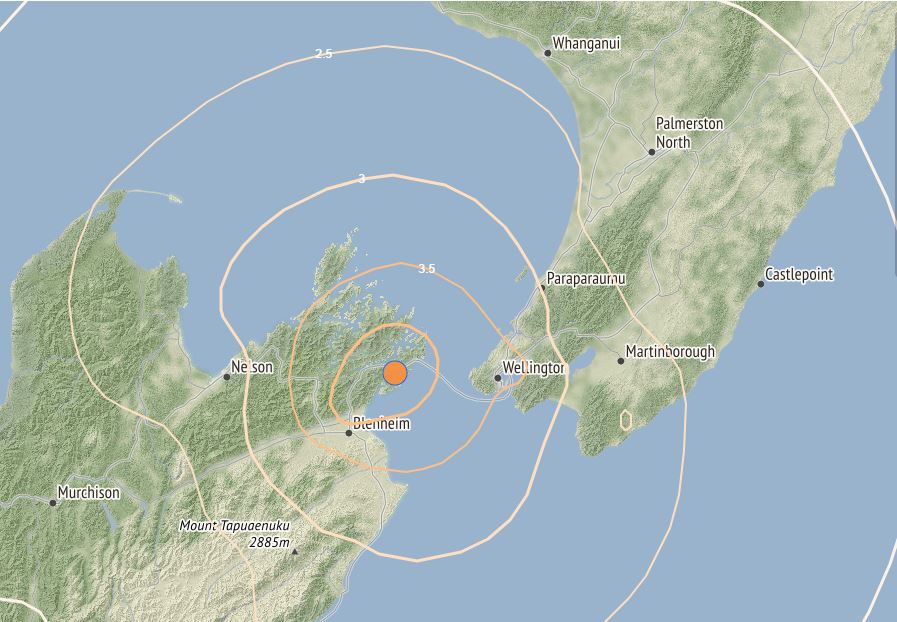A magnitude 4.9 shake—another in a recent swarm—has rattled New Zealanders, particularly Wellingtonians who feel they’re overdue for ’the big one.’
A magnitude 4.9 earthquake has shaken central New Zealand on Monday afternoon. It occurred 10 kilometres (6.21 miles) north-east of Picton at a depth of 35 kilometres, according to government monitoring body GeoNet.
Over 12,000 people reported they’d felt the quake within minutes of it occurring by posting “felt” reports on the organisation’s website.
Colloquially known as “the Shakey Isles,” New Zealand gets about 14,000 to 15,000 earthquakes a year, but the majority are too mild for most people to feel.
October has been an unsettling month, with four moderate or strong quakes felt—two on one day (Oct. 6).
Twelve of the last 18 quakes have been centred on the lower part of the North Island or upper part of the South Island, making Wellingtonians particularly nervous.
New Zealand’s capital is bisected by several parallel faults, including the eponymous Wellington fault, which is clearly visible from the air.
The topography of Wellington has been affected by major earthquakes in the past, with much of its current harbour and foreshore having been lifted out of the sea by a shake in 1855 which also caused horizontal movement of 12 metres.
So sure are Wellingtonians that another major quake is on the way that it even has a name: “The big one.”
But it’s not just superstition: Geonet has predicted there is a high probability Wellington will be struck by an earthquake 7.8 or greater within the next 10 years, and Civil Defence and emergency services regularly conduct exercises with local communities to ensure they are ready when (not if) it happens.
According to the Greater Wellington Regional Council, “A large, shallow quake along the Wellington Fault, say magnitude 7.4, would cause strong shaking and considerable damage around the region.
“If it happened during the day, there could be about 500 deaths, 4,000 injuries and perhaps 1,800 people trapped. If the quake hit at night, fewer people would be hurt.
“We could expect about 2,800 homes and other buildings to be destroyed and another 100,000 buildings to be damaged in some way,” the Council says.

